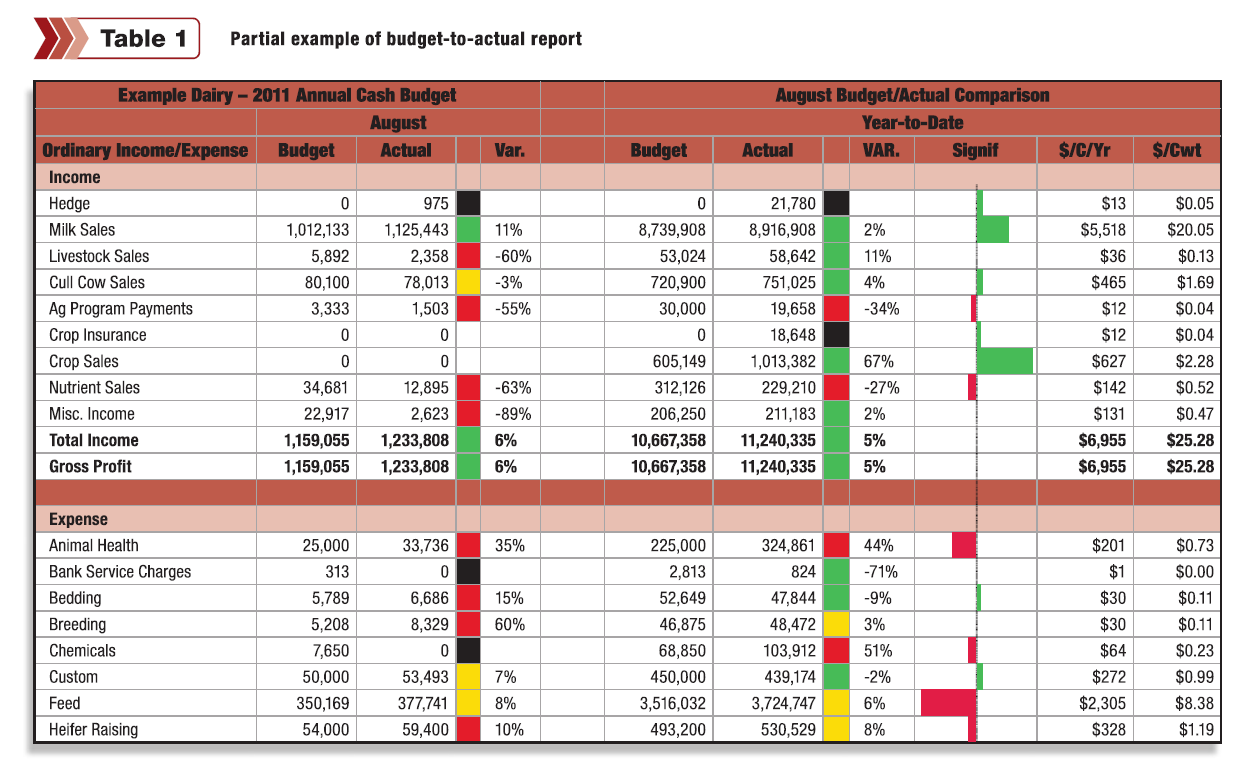Why in the world would I need to develop a budget?
Remember … the first step in fixing any problem is to first identify what is broken – do you know what is broken in your business?

I have been a proponent of annual budgeting for quite some time. When my clients first hear me advocating the development of annual budgets they usually have one of the following reactions:
1) Look at me as though I have snakes slithering out of my eyes while screaming that there is no way they could possibly benefit from trying to forecast the upcoming year’s expenses nor would they stand for any process that would constrain their on-the-fly expenditures
2) Readily adopt the process and feed off of the resulting management information
If I started this conversation with you, in which camp would you fall?
Annual budgeting is a process that is much more involved and beneficial than simply applying next year’s projected milk price onto this year’s milk production, adding 2% to this year’s expenses and calling the resulting product “next year’s budget.” Let me describe the process from my experience.
Begin with a planning discussion
Starting the budgeting process with a planning discussion involving all department managers. Recap this year’s accomplishments and challenges. Review recently-implemented management practices and determine those which have yielded positive results and those which have been reconsidered (or should be reconsidered). What profitability gaps do we want to tackle next year? Discuss new procedures and protocols that might be targeted for the coming year and their implications for operating expenses and or incomes. Are there capital investments that should be considered which would improve long-term efficiency and profitability? Is our labor and management pool properly configured? How will our incomes and expenses differ next year vs. the current year?
This conversation and the resulting answers to sometimes tough questions have several side benefits including the involvement of the entire management team in proactive strategic planning. (I encourage farms of all sizes to embrace the term “management team” because regardless of whether you have 50 cows or 50,000, there is likely more than one person involved in the overall decision-making process at your dairy.) Having the entire management team involved also improves the likelihood that everyone will take greater ownership of their area(s) of responsibility and more proactively manage with greater empowerment.
Development a monthly cash flow
The next step of the process is to lay out projected monthly incomes and expenditures for the upcoming fiscal year. Incomes should be adjusted to reflect the ebb and flow of fresh cows and heifers throughout the year. Feed expenses should be likewise adjusted for the number of animals at various stages of their production cycles as well as projected feed inventories throughout the growing season. It is important to include projected interest expenses and principal payments in your projected cash budget.
After all incomes and expenses have been projected, make estimates of projected capital expenditures for targeted capital improvements and purchases. Next account for any expected structured loan proceeds in conjunction with your capital projects. After all sources and uses of cash have been considered, calculate monthly net cash flow.
Compare budget to actual results
The final step of the process is its ultimate purpose and most important benefit. Develop a report which shows both the current month’s budget as well as your actual results. In other columns, compare year-to-date budgeted numbers with actual results. See the partial example demonstrated in Figure 1. Wherever possible the reader’s eye should be drawn toward the most important points in the report – which income or expense categories were on target (green) and which ones were on or off target by more than 10-15% (red). If possible, also point out the big-ticket items (milk income and feed, labor and replacement expenses for example). Ideally the report will paint a picture that can be quickly interpreted and used to direct management’s attention.
It is also beneficial to index revenues and expenses on a per-unit basis ($/cow/year and $/cwt.). This monthly comparison will provide owners and managers with an invaluable opportunity to greatly improve their familiarity with the business’ finances and underlying trends which will help focus management’s attention to areas most needing attention. Many dairy producers would benefit from a greater understanding of how and where cash is gained and lost in their businesses.
So the next time you hear the phrase “annual budgeting” what will your reaction be? Will you adopt the practice and learn something about your business or will you see slithering snakes? Remember … the first step in fixing any problem is to first identify what is broken – do you know what is broken in your business?












